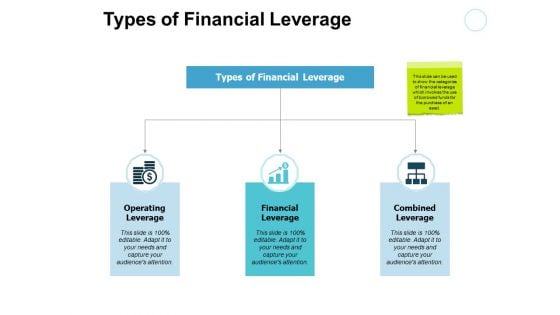Introduction
Internal audit functions are
undergoing a significant transformation as businesses increasingly incorporate
financial management concepts into their review frameworks. This evolution is
reshaping how risks are assessed, costs are controlled, and governance is
strengthened. In 2025, organizations across industries are emphasizing
financial prudence, making internal audit a powerful tool not only for
compliance but also for strategic decision-making. This shift highlights a
broader trend where audits are no longer limited to control checks but are
deeply integrated into financial strategy.
Background:
Why Financial Management Matters in Auditing
Traditionally, internal audit
focused on compliance, fraud detection, and internal control reviews. While
these remain essential, the modern business environment—characterized by
globalization, digital disruption, and stricter regulatory frameworks—demands a
more holistic approach.
Financial management concepts such
as budgeting, capital allocation, cost analysis, and performance measurement
are increasingly being applied in internal audits. This integration ensures
that organizations not only meet compliance standards but also optimize
financial efficiency.
Key
Drivers Behind This Trend:
- Rising regulatory expectations: Authorities expect businesses to demonstrate not just
compliance, but also sound financial management practices.
- Economic uncertainty:
Volatile markets require agile financial oversight.
- Stakeholder pressure:
Investors and boards seek assurance on both financial sustainability and
risk management.
Historically, audit committees
operated in silos, often disconnected from finance teams. Today, this gap is
closing, with auditors using financial tools to evaluate corporate strategy and
sustainability.
Detailed
Explanation: How Financial Management Concepts Are Applied
Internal audits now borrow heavily
from corporate finance principles. Here are some key applications:
1.
Budgeting and Variance Analysis
Internal auditors examine whether
budgets are realistic, aligned with strategy, and effectively monitored.
Variance analysis helps identify inefficiencies and control breakdowns.
2.
Cost Control and Efficiency Reviews
Financial management tools allow
auditors to analyze overhead structures, procurement costs, and resource
utilization.
Example: Using activity-based costing, auditors can detect
departments inflating expenses or misallocating resources.
3.
Capital Expenditure Oversight
Internal audits now evaluate capital
budgeting decisions (NPV, IRR, payback period) to ensure that investments align
with long-term goals.
Quote: "Internal audit has moved from being a watchdog to a
strategic advisor, ensuring capital is allocated where it creates real
value," says a senior audit partner at a Big Four firm.
4.
Liquidity and Working Capital Assessment
Auditors review cash flow cycles,
receivable collections, and inventory turnover to ensure liquidity risks are
properly managed.
5.
Performance Measurement
By applying financial ratios and
KPIs, auditors evaluate whether departments are achieving strategic objectives.
Impact
Analysis: Why This Matters
The integration of financial
management into auditing has far-reaching implications:
For
Businesses
- Better cost efficiency through financial discipline.
- Stronger governance
by linking financial and operational risks.
- Enhanced investor confidence due to transparent financial oversight.
For
Taxpayers & Regulators
- Improved tax compliance and reporting accuracy.
- Reduction in financial misstatements and
manipulation.
For
Auditors & CAs
- Expansion of the auditor’s role from compliance checker
to strategic business partner.
- Demand for multi-disciplinary expertise
combining audit and finance.
Common
Misunderstandings
- Misconception 1:
Internal audit only checks compliance.
- Reality:
It now evaluates financial efficiency and strategy.
- Misconception 2:
Financial ratios are only for external reporting.
- Reality:
Auditors use them to assess internal performance.
- Misconception 3:
Cost control means cutting expenses.
- Reality:
It focuses on optimizing resources, not just reducing costs.
Expert
Commentary
"The future of auditing lies in
convergence. Internal auditors who understand financial management are uniquely
positioned to detect hidden risks and provide actionable insights. This
evolution is not optional – it is necessary for resilience," notes Dr.
Meera Gupta, Professor of Accounting & Governance at IIM Bangalore.
Conclusion
/ Action Steps
The adoption of financial management
concepts in internal audits signals a new era of corporate oversight. For
businesses, this means treating audit not just as a compliance requirement, but
as a strategic partner in achieving growth and stability.
Action Steps for Organizations:
- Train audit teams in financial management tools.
- Encourage collaboration between finance and audit
departments.
- Use audit findings to inform board-level strategic
decisions.
Going forward, the integration of
finance and audit is expected to become the norm, shaping stronger governance
frameworks worldwide.
FAQs
Q1. How does financial management
improve internal audit effectiveness?
Financial tools allow auditors to assess efficiency, sustainability, and risk
beyond compliance checks.
Q2. What financial concepts are most
useful in audits?
Budgeting, variance analysis, capital allocation models, liquidity assessment,
and performance ratios.
Q3. Do small businesses also benefit
from this approach?
Yes. Even SMEs can use financial-based audits to control costs, improve cash
flow, and ensure sustainable growth.
Q4. Will this increase the cost of
internal audit?
Initially, yes. But long-term savings from better risk management and
efficiency outweigh the costs.
Q5. How should auditors prepare for
this shift?
By upskilling in financial management, data analytics, and business strategy.
References
/ Source Links
- Institute of Internal Auditors (IIA) – www.theiia.org
- Reserve Bank of India – www.rbi.org.in
- Ministry of Corporate Affairs, India – www.mca.gov.in
- Deloitte Insights: Future of Internal Audit 2025
- PwC Report on Audit Transformation 2024

.png)
